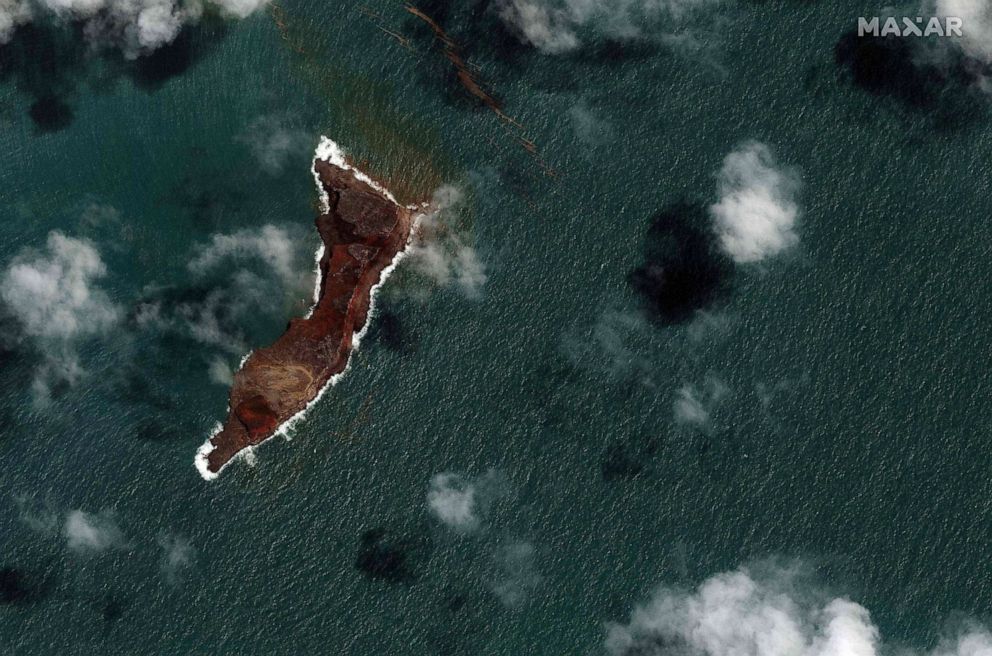Photos capture devastation from Tonga volcano eruption
The government called the eruption an "unprecedented disaster."
The Hunga-Tonga-Hunga-Ha'apai volcanic eruption last week caused widespread damage to the Pacific Island nation of Tonga, with a huge mushroom plume engulfing the kingdom and nearly 50-foot tsunami waves crashing ashore, devastating local villages.
The volcano is mostly underwater with just the top of its crater visible above the ocean surface.
The volcano's second eruption triggered a tsunami that was felt around the world. The two eruptions also damaged the submarine telephone and fiber optic cables, which cut off phone and internet connection for the entire island.
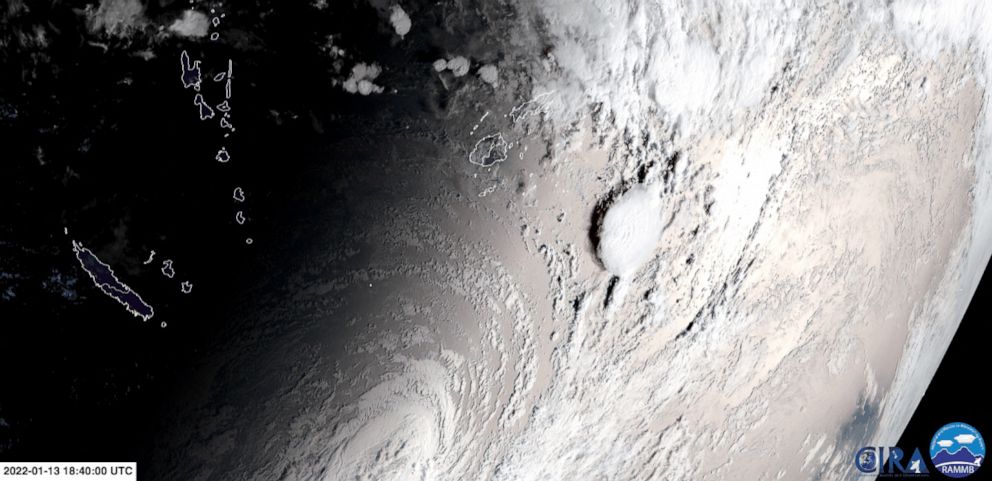
The world was left trying to piece together what had happened from satellite imagery and the little video that made it online before the internet went down. The Tongan government issued its first official communication via partially restored communications networks on Jan. 18, calling the eruptions and subsequent tsunamis an “unprecedented disaster.”
On Jan. 19, the prime minister of Tonga declared a state of emergency.
Tonga is an archipelago and Hunga-Tonga-Hunga-Ha'apai was one of the kingdom's approximately 170 islands. It is about 40 miles northwest of the Tongan capital Nukuʻalofa, on the main island of Tongatapu. Hunga-Tonga-Hunga-Ha'apai formed when a series of eruptions between December 2014 and January 2015 joined two smaller, previously separate islands.
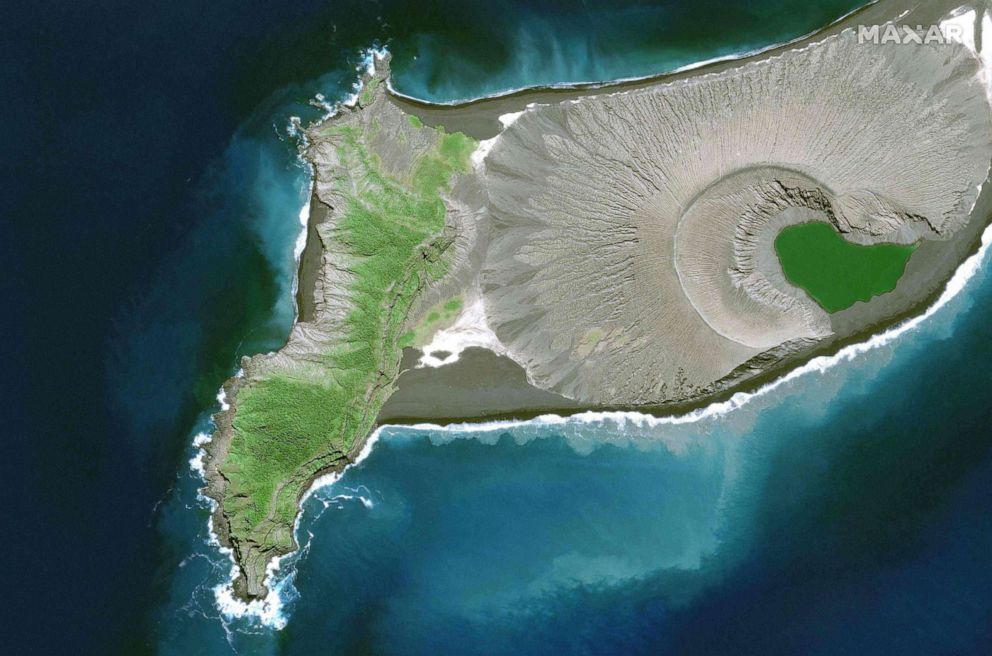
According to the National Oceanic and Atmospheric Administration, it was the first of its kind to form in 53 years and NASA predicted it to have a lifespan of six to 30 years.
By the morning of Jan. 15, the island had partially disappeared; by the end of the day it been blown apart and almost completely disappeared.
Toward the end of 2021, the volcano was again active and the island had grown in size but by Jan. 11 the Tongan Geological Services declared it dormant again. Then, on Jan. 14, Tongan Geological Services released a public notice that “eruption is forecast to be imminent.”
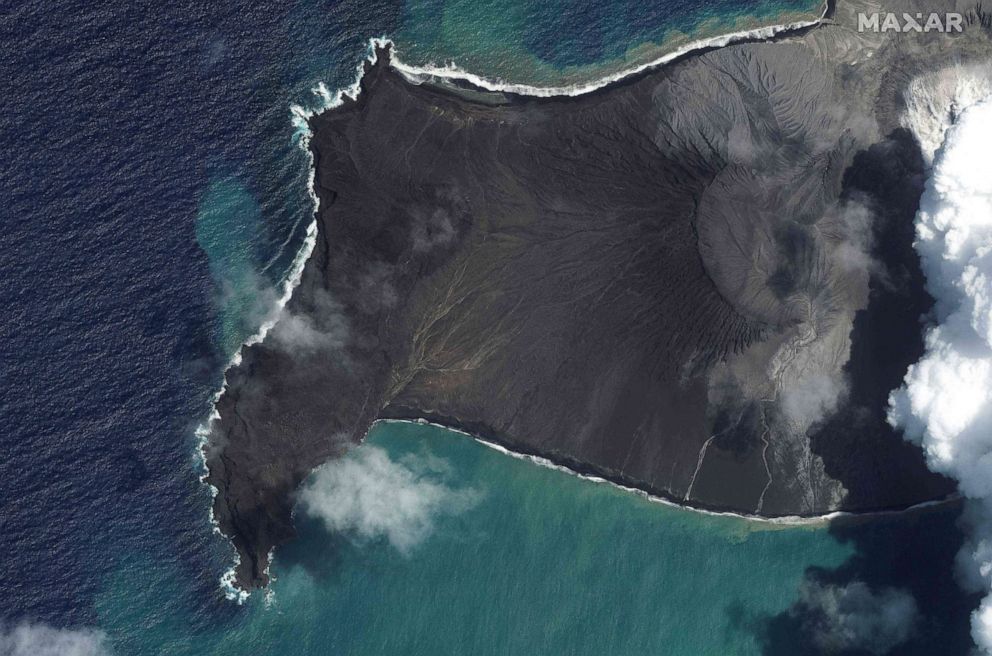
At 4:20 a.m. local time on Jan. 14, the volcano exploded seven times more forcefully than it had in December and blasted ash, steam and gas 12.4 miles into the air. It set off a foot-high tsunami wave that was measured in the Tongan capital.
Later that day, the Tongan Geological Services posted spectacular videos of the explosive volcano.
Then a second eruption began on Jan. 15 at about 5:10 p.m. local time, according to NOAA. This eruption released a volcanic mushroom plume which reached the stratosphere and covered the whole Tongan archipelago, according to the government. It also triggered a much larger tsunami which hit the shores of Tongatapu shortly afterwards with waves rising to 15 meters. A South Korean satellite captured the second eruption.
What happened next is difficult to say because communication with the islands was cut off. The whole archipelago was blanketed in an ash cloud.
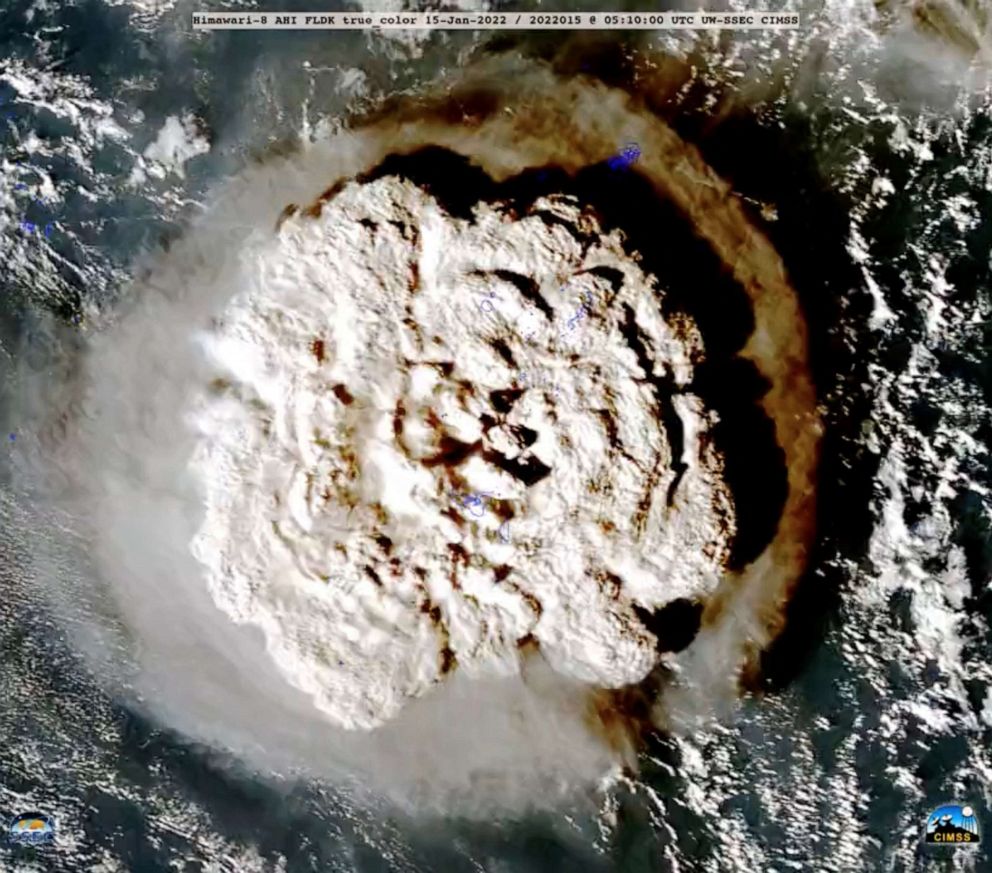
The first images the world saw of Tonga came from satellites on Jan. 18, after the ash cloud had cleared, but before planes could fly to the island or communication had been restored. These before and after images show the damage:
This shows the ash that blanketed the island on Jan. 18:
This shows the damage from the tsunami that reached the capital on Jan. 15:
The next images we saw were from Australian and New Zealand survey planes which flew around the islands to assess the destruction. They couldn't land because the runways weren't clear:
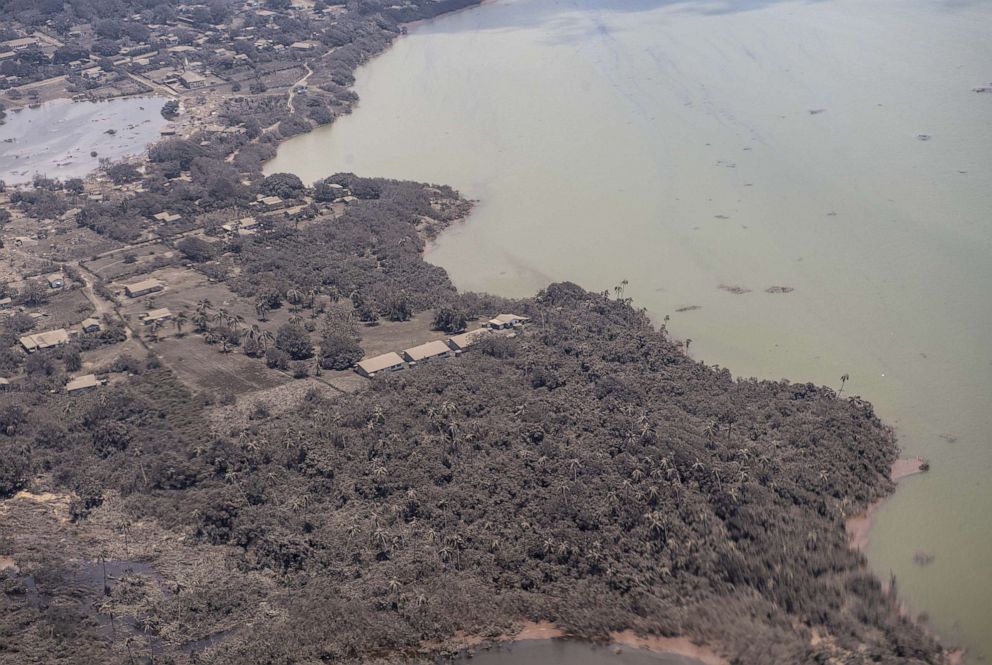
It wasn't until Jan. 20 for the capital's runways to be clear enough for planes to land with aid supplies. The first images to come out of Tonga show the ash that fell on the island.
The Australian government planes were the first to land:
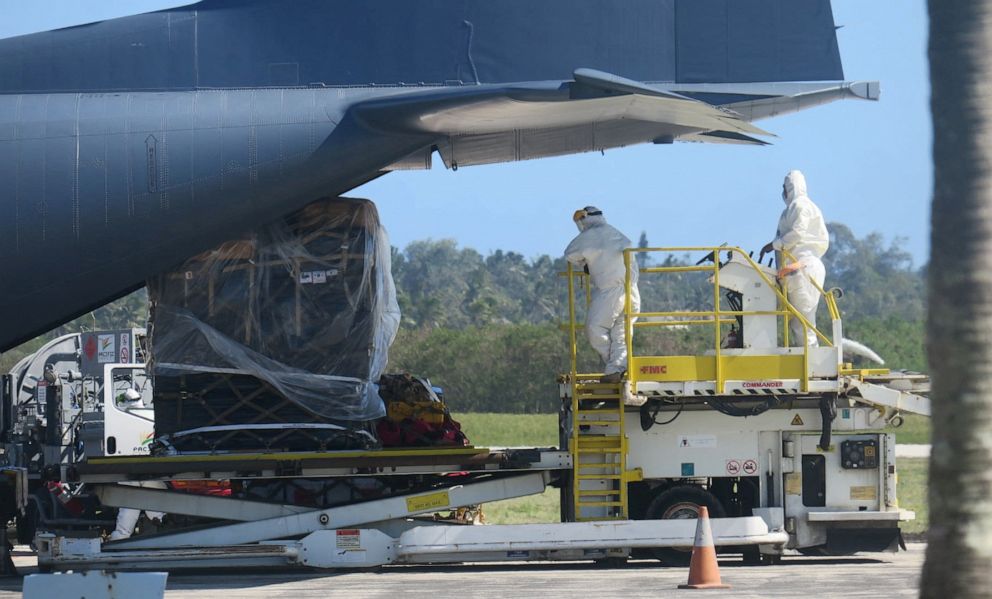
We got our first view of the destruction at ground level:
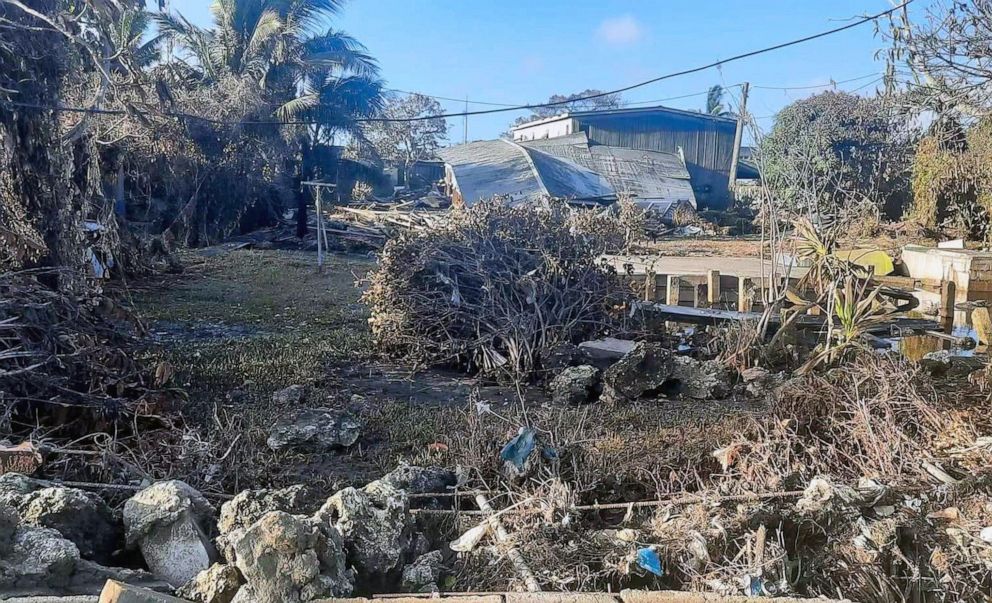
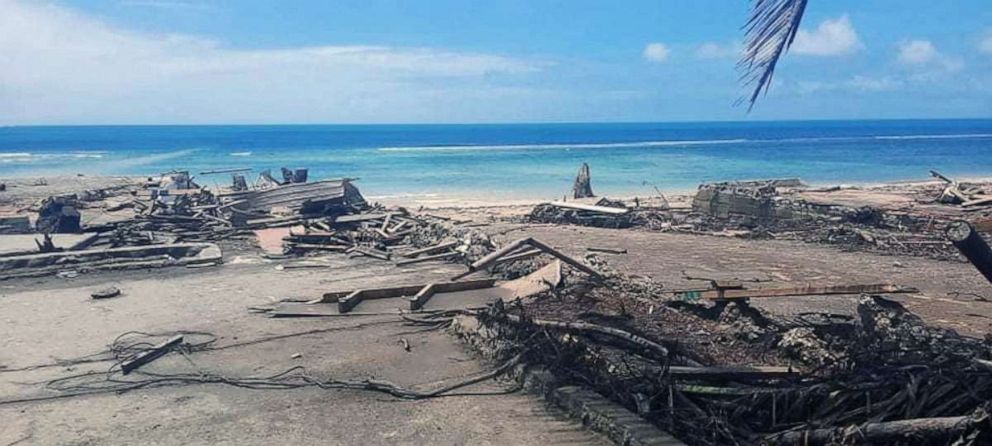
Shockwaves around the world:
The tsunami triggered by the second eruption reached Fiji within a couple of hours and Vanuatu after that.
Waves hit the shore by night in Port Vila, Vanuatu, on Jan. 15:
Flooding in Santa Cruz, California, on Jan. 15:
By the time this satellite could see through the ash cloud on Jan. 16, the volcanic island had almost completely disappeared.
